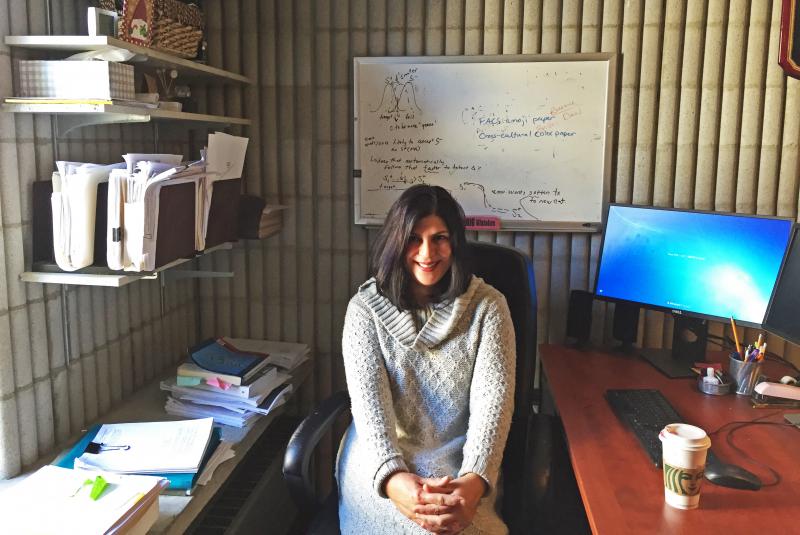Meet the scientist studying how vocabulary can improve emotional health
Dr. Jennifer Fugate of UMass Dartmouth’s psychology department believes that people have more control over their emotions than they think — and that language may help people manage their emotional responses, a theory that has major implications for improving mental health.
The Wisconsin native came to live and work in Dartmouth in 2012 after working with psychologist Dr. Lisa Feldman Barrett during a postdoctoral fellowship at Northeastern University.
Her research draws from Dr. Barrett’s theory — outlined in a popular Ted talk — that emotions are constructed from experience, rather than fundamental responses built in to our brains, as was previously thought.
Dr. Fugate is an assistant professor specializing in social cognitive psychology, which seeks to describe how cognitive processes affect social interactions, particularly how language and facial movements relate to emotions.
And she has been steadily gaining recognition in her field. In 2018, she even consulted with bestselling author Malcolm Gladwell for his most recent book “Talking to Strangers,” for which she analyzed the facial expressions of characters from the 1990s sitcom Friends.
“I study how language shapes our perception of emotion, including facial expressions,” Dr. Fugate said from her concrete-walled office in the main building on the university’s Old Westport Road campus.
According to Dr. Barrett’s theory, contrary to what many people — and some researchers — think, even basic emotions are not expressed the same way all of the time.
“We don’t express emotions on our face in a consistent and specific way,” Dr. Fugate explained. “So it’s less about what’s out there than about what’s inside the brain and how the brain works.”
This has come to light in her own research as well.
“We see that when people are provided with emotion words or the meaning of emotion words is removed, they look at a face in a very different way,” she said. “So that says to us that the words that people have in mind are really directing how we see these facial movements.”
“I’m not saying that the face or the body or the tone of voice doesn’t provide any information,” she added. “But what it gives you is kind of a generalized state of positive or negative.”
This doesn’t allow people to perceive differences between similar emotions, such as anger, fear, and disgust.
“That’s where words and language really help the picture,” Dr. Fugate said, adding that the same processes translate to interpreting our own emotions as well.
“It’s not that these things happen to us. It’s that we create them from more basic affective information,” she said. “And that gives people some power over how they feel, and it also gives people more flexibility in how they view other people. And I think both of those are really important to better emotional health.”
One way to help, she suggested, is to learn more emotion words.
“We know as people increase their emotional vocabulary, when they are able to pinpoint their own internal sensations, those words provide them more directed action,” she said. “So it tells them not only how they’re feeling, but what they can do next.”
People with this capacity, according to Dr. Fugate, “suffer less from depression, anxiety, and are less likely to become alcoholics or engage in binge-eating or suicidal self-injury.”
She is currently working on several studies with her students — including one on the relationship between emotional vocabulary and screen time in middle schoolers, and another on whether emojis allow people to differentiate between emotions.
And the balance of research and teaching that UMass Dartmouth provides, she said, is rewarding.
“Seeing students improve, working with students every day...Those rewards are what really keep me motivated,” Dr. Fugate said with a smile.
As for Friends, she said, “they provide these very caricatured, stereotypical responses...So actors are successful because they conform to the Western stereotype of what we think of [emotional expressions]. But that’s not how people in everyday life move their faces.”













